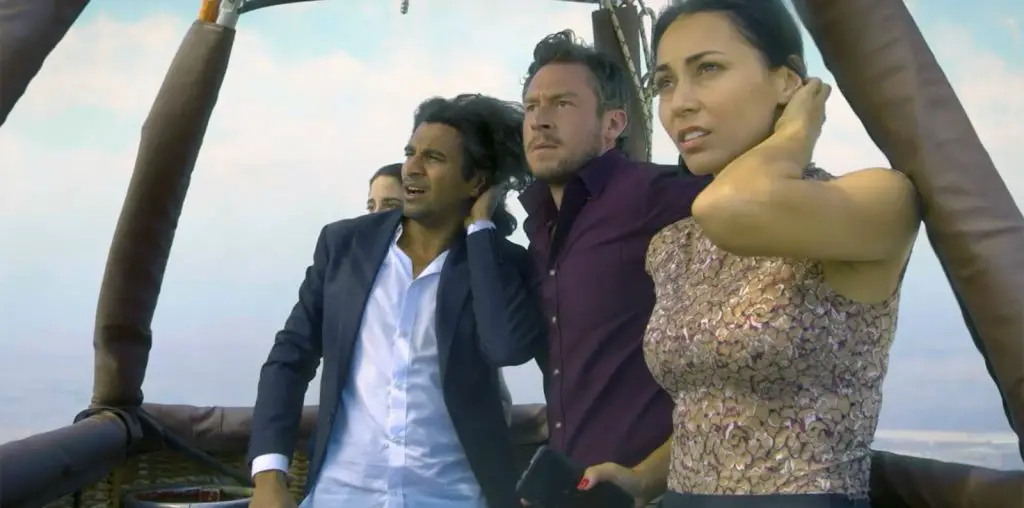
Samuel Moaz’s “Lebanon” begins and ends in a dandelion field, but every shot in between takes place in the gut of a tank. I loved the movie, but I do have to take issue with the title. We sure don’t get to see much of the country.
The tank in question is an Israeli one, taking part in the IDF’s 1982 incursion into Lebanon. The men inside are Shmulik (Yoav Donat), the gunner and the new guy; Assi (Itay Tiran), the edgy leader; Hertzel (Oshri Cohen), the wiseass; and Yigal (Michael Moshonov), the scared, sympathetic driver. We see their faces in shades of rich bronze, half in shadow, always gleaming with sweat and wide-eyed with fear. Inside the tank, they establish their own pecking order, customs, jokes, and tics. They are boys, and they’re scared to kill, even from inside a tank.
Sometimes we see outside the tank, but only from the perspective of the optical periscope or driver’s optics. Scanning of the terrain is often accompanied by violent mechanical moaning as the periscope swivels this way or that. The effect is a feeling of extremely limited vision, an atmosphere of frantic confinement.
Through the periscope, the soldiers witness the humiliation and devastation of the Lebanese. They’re ordered to go through a town that has already been bombed out by the air force and clear whatever remains — it is to be a “walk in the park.” But there are still Lebanese fighters in the ruins, and they take civilian hostages. We see an old man sitting at an outdoor café as his lunch companion lies facedown across the table, skull blasted in.
Part of what’s so terrifying about the soldiers’ situation is the lack of information. Their commander, Jamil (an excellent, exhausted-looking Zohar Strauss) clambers into the tank, barks orders, says “Any questions?” and then climbs out before they have time to ask any. The tank ends up in places it shouldn’t, somehow. They aren’t fighting Syrians; why is a bloody Syrian prisoner being stuffed into the tank with them? Where is that eerie music coming from? Where did the major — and all the other soldiers — go?
As the fighting gets more intense and the situation murkier and increasingly dire, the physical space the men live in gets uglier and uglier. Filled with belching smoke, smeared with engine oil, spattered with thousands of damp, yellow soup croutons, the interior of the tank turns into a hellish cavern. The men squat in a swamp of cigarette butts and black, greasy water; they urinate into a small metal box.
The film’s best scenes come at the end, when the stranded tank must follow the extremely dubious directions of a Phalangist soldier (an Arab Christian allied with the Israelis), played by a terrific, menacingly charismatic actor named Ashraf Barhom. His input will supposedly help them escape from a Syrian stronghold. By this time, the lens of the optical periscope is fractured and distorted, and POV shots through it have the effect of a long, unending nightmare. The whole film does, really. It stayed with me for a while afterward.

